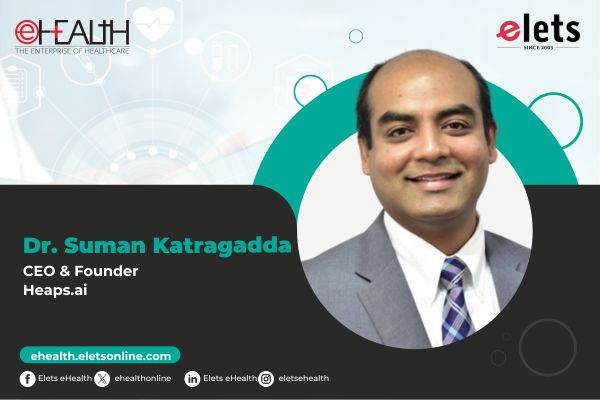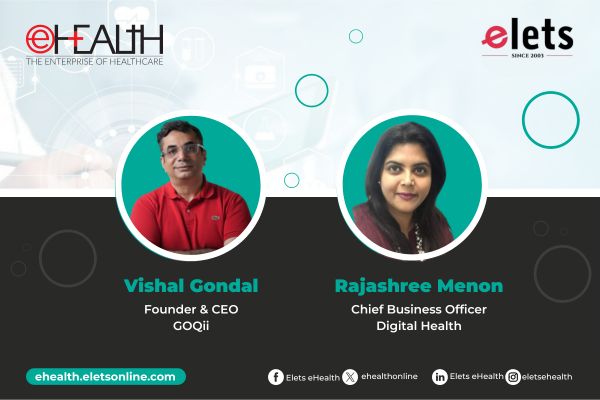
Though the Indian pharmaceuticals industry began expanding in the 1980s, only about 33% of the Indian population has access to modern medicine.1 Also, accurate estimates are hard to come by, but studies indicate that 50 to 80% of Indians do not have access to all the medicines they require.2 One reason for this in rural areas is the absence of qualified doctors and medical stores. Only 38% of our primary health centres (PHCs) have all the required medical personnel. In smaller towns and villages, patients are often at the mercy of unqualified Registered Medical Practitioners (RMPs).
A recent report by the Planning Commission stated that essential therapeutic drugs are not supplied in most public health institutions with the exception of some states and adds that an essential component of strengthening primary health facilities will be a system of guaranteeing essential care.” Pharmaceutical companies’ expansion into rural India could have a significant impact on the availability of drugs. The pharma industry has come up with a novel plan of penetrating the rural market by using post offices to sell over-the-counter drugs. A presentation to this effect has been made to the Planning Commission’s Deputy Chairman, Montek Singh Ahluwalia. Industry experts, however, say the move would help increased sale of drugs that are not even allowed in some of the developed countries because of the harmful side effects.

With expenditure on healthcare in rural India on the rise and improving infrastructure facilities, pharma companies are looking to invest in rural markets in a big way. The government announcement of a five year tax holiday for hospitals in rural areas, will further help in facilitating basic healthcare amenities. One must however keep in mind the currently limited purchasing power of rural India. The Bhore Committee report understood this way back in 1946 and recommended that no person should be denied medical care because of the inability to pay for it. Today, the three-tier plan to provide comprehensive preventive and curative care lies in shambles. The scenario is grave and complicated with rampant corruption adding to unaffordability and inaccessibility. A majority of illnesses and deaths are due to poverty and unavailability of life-saving drugs. The disparity in access to drugs between urban and rural areas is reflected in the marked difference in the number of children (12 months) who received all vaccinations (31% rural and 51% urban).

Tuberculosis, respiratory infections, malaria and diarrhoea are amongst the main causes of death in India, and are all treatable. Treatment of TB is supposed to be free, through the state. Whilst steps such as these will help to solve the problem of unavailability of medicines, there is a need to simultaneously boost rural purchasing power, especially in economically backward regions.

 E-medicine or telemedicine is “the use of telecommunication to provide medical information and services”. It may be as simple as two health professionals discussing a case over the telephone, or as sophisticated as using satellite technology to broadcast a consultation between providers at two distant locations, using video conferencing equipment.
E-medicine or telemedicine is “the use of telecommunication to provide medical information and services”. It may be as simple as two health professionals discussing a case over the telephone, or as sophisticated as using satellite technology to broadcast a consultation between providers at two distant locations, using video conferencing equipment.

There are vast asymmetries in information in the doctor-patient relationship, as well as vast differences in the access to healthcare within the population. Although nearly 75% of Indians live in rural villages, more than 75% of Indian doctors are based in cities. Over 60% of the 300 top-selling drugs are not even approved by the National List of Essential Medicines (NLEM).3 This general problem is exacerbated in rural areas with high illiteracy. A study conducted by the Indian Institute of Public Opinion in 2005 found that 89% of rural Indian patients have to travel about 8 km to access basic medical treatment, and the rest have to travel even farther.4 Apart from this, it is common for women to ‘normalise’ their health problems and ignore serious diseases which even hamper their daily routine.
Speaking at a national level conference in Udaipur, Rajasthan recently, Marzio Babille, head of health at UNICEF India said that the problem is that people do not know much about the government programmes and the authorities are not doing enough to make them popular. He said the ASHAs are also not well trained and are overburdened. “India never lacks manpower but trained manpower is a concern here.” It is not surprising then that 60% of under-5 deaths are preventable. If healthcare is to become universal, there is a need for committing much greater public resources and radical structural adjustment to the National Health Policy.
The National Rural Health Mission (NRHM) has identified 18 ‘low-performing’ states in terms of institutional deliveries. These are Uttar Pradesh, Uttarakhand, Bihar, Jharkhand, Chhattisgarh, Rajasthan, Madhya Pradesh,Orissa and Jammu and Kashmir.
Bimla of Duhiya village in Gwalior District, Madhya Pradesh is an Accredited Social Health Activist (ASHA). As an ASHA, she is paid INR 600 for every pregnant woman she is able to take to a government hospital for delivery. All she can remember of her “training” is that she, and others like her, were told that they would be paid if they took pregnant women to hospital. A kutcha road links Duhiya to Gwalior city. Bimla is supposed to serve a population of 1,000, but serves two Panchayat areas with a total population of 2,000. Sometimes, Auxiliary Nurse Midwives (ANMs) refuse to even touch pregnant women of lower castes, let alone attend to their needs.
Can telemedicine provide an answer?
Poor infrastructure of rural health centres makes it very difficult to retain doctors in villages, as they feel professionally isolated and outdated if stationed in remote areas. In addition, poor Indian villagers spend most of their out-of-pocket health expenses on travel to the speciality hospitals in the city and for stay in the city along with their escorts.
E-medicine or telemedicine is “the use of telecommunication to provide medical information and services”. It may be as simple as two health professionals discussing a case over the telephone, or as sophisticated as using satellite technology to broadcast a consultation between providers at two distant locations, using video conferencing equipment.
Telemedicine promises to be one of several possible solutions to some of the medical dilemmas facing India and other developing countries. Chhattisgarh, Rajasthan and Karnataka are among the states that have used telemedicine to a great extent. The North-Eastern states have a high incidence of cancer, but the region lacks adequate hospitals for treatment. In response to this, the Dr. B. Barooah Cancer Institute (BBCI) in Guwahati, Assam, one of the largest institutes in the region, started a telemedicine initiative in 2003. Now, patient’s suffering from cancer in the region can access an expert at their doorstep. The objective of the telemedicine centre is to:
-
Improve access to cancer care and cancer initiatives in undeserved areas.
-
Reduce cost of cancer care delivery. (Patients earlier had to go to Mumbai and other metros.)
-
Standardise and ensure practice of Evidence Based Medicine.
-
Export clinical expertise and increase the availability of cutting edge cancer protocols and procedures to all affiliated facilities.
Roadblocks:
There remain several challenges to the implementation of telemedicine on a large scale: -
Day to day maintenance becomes difficult if there is a lack of technical support. It can take a long time for any
technical snag to be fixed as technical support is hard to come by in remote areas. -
Low bandwidth and lack of interoperability standards for software.
-
There needs to be in place a critical mass of patients who will utilise the telemedicine facility; along with hardware, software and connectivity infrastructure; technical support manpower; treaties between linking institutions with support from link providers.
-
There is the possibility that telemedicine will not be used to augment the quality of care to the underserved, but to provide a minimum care from a distance instead of care that should optimally be provided in person.
-
Privacy and confidentiality are critical issues, not unique to telemedicine, but important in this context
 Encouraged by the steady growth of its telemedicine programme, ISRO launched HealthSAT – an exclusive health satellite in 2005, to bring telemedicine and medical education needs to the poor on a larger scale. The satellite would not only serve remote areas of India but also those in other poor countries in Asia and Africa. HealthSAT is expected to cost only between INR 600 million to INR 1 billion. Each receiving terminal (where patients and rural doctors are present for audiovisual conferences) in the villages is expected to cost about INR 0.5 million. This telemedicine service will save the cost that patients would have spent on travel and accommodation.
Encouraged by the steady growth of its telemedicine programme, ISRO launched HealthSAT – an exclusive health satellite in 2005, to bring telemedicine and medical education needs to the poor on a larger scale. The satellite would not only serve remote areas of India but also those in other poor countries in Asia and Africa. HealthSAT is expected to cost only between INR 600 million to INR 1 billion. Each receiving terminal (where patients and rural doctors are present for audiovisual conferences) in the villages is expected to cost about INR 0.5 million. This telemedicine service will save the cost that patients would have spent on travel and accommodation.
The aim of the HealthSAT network is to connect rural hospitals to specialist centres in the cities.
Moreover, rigid data processing laws and difficulty in accreditation of Indian telemedicine providers have also prevented telemedicine from making a headway until now. The Planning Commission, in a recent report, stated that the wide variation in the quality of medical professionals (both at the graduate and post-graduate level) across India has impeded the expansion of services.
About 75% of our doctors practice in urban areas and 23% in semi-urban areas. This leaves just 2% of the qualified doctors, who are attached to about 23,000 primary health and 3000 community health centers, to attend to 70% of the rural population. For example, nearly all 6000 opthamology surgeons chose to practice in urban areas rather than rural areas where the prence of speciality eye disease is high. In the north-eastern region, this dependence on medical diagnosis and treatment from outside is even more pronounced. In Himachal Pradesh too, over 55% of villages do not have linkages through all-weather roads, making access to medical facilities very difficult. 18% of the villagers have to travel at least 10 kilometres to reach a hospital. Telelinks appear to be the only feasible way to address the crisis.
A promising future
Telemedicine is becoming increasingly popular all over the world for its tremendous potential to provide cost effective health care delivery. Though in its infancy (with only pilot projects initiated thus far), telemedicine has become increasingly plausible due to a confluence of ongoing technological advances in multimedia, imaging, computers and information systems as well as in telecommunications. The Telemedicine Society of India was formally launched in Lucknow as recently as 2006. It objectives include:
-
promoting, encouraging developing and advancing research in telemedicine
-
to encourage and promote application of telemedicine technology in clinical care, education and research
-
fostering, networking and collaboration, among health care providers, policy makers, NGOs and industry in telemedicine technology
-
to develop and implement national standards and recommend guidelines for licensing, certification and authentication.
Telemedicine links between Tripura and Kolkata and the Andaman and Nicobar Islands and Chennai have cut patients’ travel expenses and ensured quality medical advice. In recent years, low-cost inputs have been developed. However, a far more serious attitude and greater dedication of funds and resources is required to take healthcare and medicines to every part of India.
References:
1. World Medicines Report, 2004;World Health Organisation
2. Dr. Amit Sen Gupta, IMPF Policy Notes for Parliamentarians on Access to Medicines
3. S. Srinivasan & Dr. Anurag Bhargava, IMPF Policy Notes for Parliamentarians on Access to Medicines
4. Rao R (2005 May) Taking health care to rural areas. I4d.
5. https://www.themanager.org/Resources/Telemed.pdf
6. https://www.cbhi-hsprod.nic.in/listdetails.asp?roid=123
Some stellar telemedicine projects in India:
SANKARA NETHRALAYA
Project inception: 2003 – Total number of patients benefited: 196,444
 Sankara Nethralaya (SN), a unit of Medical Research Foundation has served more than 1.75 lakh patients under the Teleophthalmology project, thanks to the support from various sources. With a majority of medical resources, including workforces, concentrated in the cities, SN’s effort stands as a beacon of light for those suffering millions in the rural pockets.
Sankara Nethralaya (SN), a unit of Medical Research Foundation has served more than 1.75 lakh patients under the Teleophthalmology project, thanks to the support from various sources. With a majority of medical resources, including workforces, concentrated in the cities, SN’s effort stands as a beacon of light for those suffering millions in the rural pockets.
 The Rural Mobile Teleophthalmology unit has an air-conditioned consultation room equipped with state of the art equipment for a comprehensive eye check-up. In addition, it has the facility to transmit digitised images of the posterior and anterior segments of the eye to the Main Hospital Hub at Chennai via Satellite connectivity provided by Indian Space Research Organization (ISRO), Bangalore. Facilities exist for Teleconsultation to interact between the Super Specialist at Chennai, Hub and the patient along with their Optometrist in the unit at rural areas of Northern Tamil Nadu and Southern Andhra Pradesh.
The Rural Mobile Teleophthalmology unit has an air-conditioned consultation room equipped with state of the art equipment for a comprehensive eye check-up. In addition, it has the facility to transmit digitised images of the posterior and anterior segments of the eye to the Main Hospital Hub at Chennai via Satellite connectivity provided by Indian Space Research Organization (ISRO), Bangalore. Facilities exist for Teleconsultation to interact between the Super Specialist at Chennai, Hub and the patient along with their Optometrist in the unit at rural areas of Northern Tamil Nadu and Southern Andhra Pradesh.
Through its 2011 camps, Sankara Nethralaya conducts free:
Eye Awareness Programs
Continuing Medical Education Programs for doctors in rural areas
Training of teachers for vision screening program
Comprehensive eye examinations in rural areas at patients door step.
It has performed 37,157 teleopthalmology consultations and 151000 patients have been thoroughly examined so far.
SN collaborates with Essilor, ISRO, MSSRF, Mehra Eyetech Pvt. Ltd., World diabetes Foundation, Government of India, Topcon, Microvision, Campaign Sight First II and Intel to provide services. It has 80 Tele Screening Camps and 949 Tele Ophthalmology Consultations (Tamil Nadu, AP, Karnataka and Maharashtra).
NARAYAN HRUDAYALAYA
Project inception: 2006 – Total number of patients benefited: 12,000
 One of the largest telemedicine networks in the world, sponsored by the Indian Space Research Organisation (ISRO), the Narayanan Hrudayalaya Telemedicine Network runs through 26 locations in India and abroad, offering video consultation round-the-clock, primarily for heart patients from remote areas. Using ordinary telephone lines, a large number of ‘family physicians’ are networked with NH for early diagnosis of heart attacks.
One of the largest telemedicine networks in the world, sponsored by the Indian Space Research Organisation (ISRO), the Narayanan Hrudayalaya Telemedicine Network runs through 26 locations in India and abroad, offering video consultation round-the-clock, primarily for heart patients from remote areas. Using ordinary telephone lines, a large number of ‘family physicians’ are networked with NH for early diagnosis of heart attacks.
The tele-medicine project is a non profitable project sponsored by Asia Heart Foundation (AHF), Kolkata and Narayana Hrudayalaya (NH) Bangalore, Indian Space Research Organization (ISRO) and state Governments. Asia Heart Foundation at Kolkata and Narayana Hrudayalaya at Bangalore are the main hubs for Telemedicine linking the seven states. The specialists at both the institutions offer their services for this project entirely free.
Coronary Care Unit Network
A coronary care unit is set up in semi urban or rural area and linked to Narayana Hrudayalaya. Each CCU is equipped with beds, medication, defibrillators, ECHO machines, ECG machines, & videoconferencing equipment & technical staff who are trained to operate the equipment. In addition, NH trains the doctor at the CCU to take care of acute cardiac emergencies to avoid the delay in critical treatments before referring the patient to a speciality centre.
Teleconsultation Network
The basic infrastructure of telemedicine is provided in remote locations whereby the remote centres can interact directly using audio and video support with the specialist using digital communication (DICOM) link. The software to transmit data is provided to the remote centres to transmit the basic data of the patient to the specialist location before the schedule of teleconsultations.
Family Physicians ECG Network
Narayana Hrudayalaya provides cardiac support to general practitioners with the use of TTECG. A software developed by SN Informatics is used to scan and transmit ECG via a web connection. An ECG device is provided to the GP along with the software and the report can be transmitted and received through a normal telephone line. This can be supported through an internet service and an IP line. The entire process of receiving and sending the reported ECG will take 10 minutes.
SANJAY GANDHI POSTGRADUATE INSTITUTE OF MEDICAL SCIENCES
Project inception: 1999 – Total no. of patients benefited: 1543
 SGPGIMS, Lucknow in collaboration with the Uttar Pradesh State government and DIT has taken up the initiative to set up a School of Telemedicine and Biomedical Informatics in its campus. It will house different laboratories in the field of e-health such as Telemedicine, Hospital Information System, Biomedical Informatics, Medical Multimedia and Image Management, Medical Knowledge Management, Artificial Intelligence, Virtual Reality and Robotics. The objective of the School is to create various resource facilities, conduct structured training programmes, research and development and providing consultancy to government and private healthcare organisations in collaboration with technological and medical universities in the country and abroad.
SGPGIMS, Lucknow in collaboration with the Uttar Pradesh State government and DIT has taken up the initiative to set up a School of Telemedicine and Biomedical Informatics in its campus. It will house different laboratories in the field of e-health such as Telemedicine, Hospital Information System, Biomedical Informatics, Medical Multimedia and Image Management, Medical Knowledge Management, Artificial Intelligence, Virtual Reality and Robotics. The objective of the School is to create various resource facilities, conduct structured training programmes, research and development and providing consultancy to government and private healthcare organisations in collaboration with technological and medical universities in the country and abroad.
Number of Personnel employed: At present there are 18 personnel employed in different government sponsored projects and working at School of Telemedicine and Biomedical Informatics and its network partners. They worked in the capacity of project coordinator, network engineers, project assistants and telemedicine technicians to look after the organizational, managerial and technical responsibility of the projects and in creation and maintenance of website (sgpgi-telemedicine.org , telemedindia.org.)
Infrastructure at the SGPGIMS Telemedicine Centre consists of several independent telemedicine work stations equipped with tele-radiology, tele-pathology and videoconferencing units with large display devices. It can carry out medical data transfer and videoconference with six remote locations simultaneously. The communication set-up consists of six Integrated Services Digital Network (ISDN) lines, one Ku band Demand Assigned Multiple Access (DAMA) and one extended C band Very Small Aperture Terminal (VSAT). All telemedicine sessions are real time and interactive in nature. The operation theatres of SGPGIMS are equipped with high resolution video camera to transmit live telecast of surgical procedures. Two auditoria of 700 and 120 seating capacity are networked through optic fibre backbone to the telemedicine centre to enable interactive live telecast of proceedings of seminars, workshops and conferences to different locations in India and abroad. With the completion of intra-hospital telemedicine network as an infrastructure component of upcoming School of Telemedicine, all HIS nodes will be made potential telemedicine nodes. 
Be a part of Elets Collaborative Initiatives. Join Us for Upcoming Events and explore business opportunities. Like us on Facebook , connect with us on LinkedIn and follow us on Twitter , Instagram.
"Exciting news! Elets technomedia is now on WhatsApp Channels Subscribe today by clicking the link and stay updated with the latest insights!" Click here!
















